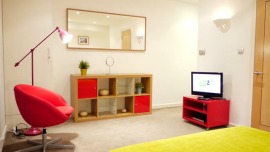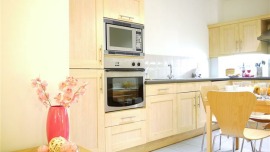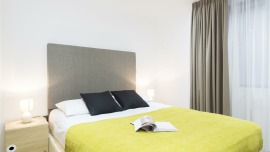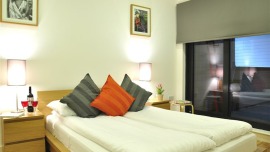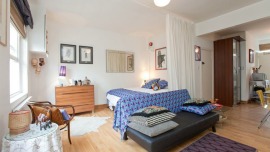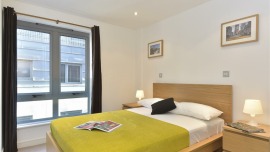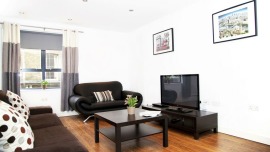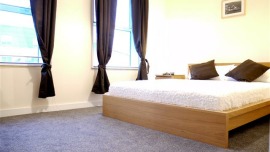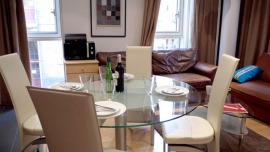Royal Opera House
The Royal Opera House is an opera house and major performing arts venue in Covent Garden, central London. The large building is often referred to as simply "Covent Garden", after a previous use of the site of the opera house's original construction in 1732. It is the home of The Royal Opera, The Royal Ballet, and the Orchestra of the Royal Opera House. Originally called the Theatre Royal, it served primarily as a playhouse for the first hundred years of its history. In 1734, the first ballet was presented. A year later, Handel's first season of operas began. Many of his operas and oratorios were specifically written for Covent Garden and had their premieres there.
The current building is the third theatre on the site following disastrous fires in 1808 and 1856. The façade, foyer, and auditorium date from 1858, but almost every other element of the present complex dates from an extensive reconstruction in the 1990s. The Royal Opera House seats 2,256 people and consists of four tiers of boxes and balconies and the amphitheatre gallery. The proscenium is 12.20 m wide and 14.80 m high. The main auditorium is a Grade 1 listed building as noted by Theatres Trust.
The Davenant Patent
The foundation of the Theatre Royal, Covent Garden lies in the letters patent awarded by Charles II to Sir William Davenant in 1660, allowing Davenant to operate one of only two patent theatre companies (The Duke's Company) in London. The letters patent remained in the possession of the Opera House until shortly after the First World War, when the document was sold to an American university library.
Facilities
Paul Hamlyn Hall
The Paul Hamlyn Hall is a large iron and glass structure adjacent to, and with direct access to, the main opera house building. Historically, it formed part of the old Covent Garden flower market, and is still commonly known as the 'floral hall', but it was absorbed into the Royal Opera House complex during the 1990s redevelopment. The hall now acts as the atrium and main public area of the opera house, with a champagne bar, restaurant and other hospitality services, and also providing access to the main auditorium at all levels.
The redevelopment of the Floral Hall was originally made possible with a pledge of £10m from the philanthropist Alberto Vilar and for a number of years, it was known as the Vilar Floral Hall; however Vilar failed to make good his pledge. As a result, the name was changed in September 2005 to the Paul Hamlyn Hall, after the opera house received a donation of £10m from the estate of Paul Hamlyn, towards its education and development programmes.
As well as acting as a main public area for performances in the main auditorium, the Paul Hamlyn Hall is also used for hosting a number of events, including private functions, dances, exhibitions, concerts, and workshops.
Linbury Studio Theatre
The Linbury Studio Theatre is a flexible, secondary performance space, constructed below ground level within the Royal Opera House. It has retractable raked seating and a floor which can be raised or lowered to form a studio floor, a raised stage, or a stage with orchestra pit. The theatre can accommodate up to 400 patrons and host a variety of different events. It has been used for private functions, traditional theatre shows, and concerts, as well as community and educational events, product launches, dinners and exhibitions, etc., and is one of the most technologically advanced performance venues in London with its own public areas, including a bar and cloakroom.
The Linbury is most notable for hosting performances of experimental and independent dance and music, by independent companies and as part of the ROH2, the contemporary producing arm of the Royal Opera House. The Linbury Studio Theatre regularly stages performances by the Royal Ballet School and also hosts the Young British Dancer of the Year competition.
The venue was constructed as part of the 90s redevelopment of the Royal Opera House. It is named in recognition of donations made by the Linbury Trust towards the redevelopment. The Trust is operated by Lord Sainsbury of Preston Candover and his wife Anya Linden, a former dancer with the Royal Ballet. The name Linbury is derived from the names Linden and Sainsbury. It was opened in 1999 with a collaboration from three Croydon secondary schools (including Coloma Convent Girls' School and Edenham High School) in an original performance called About Face.[citation needed]
High House Production Park (High House, Purfleet)
The Royal Opera House opened a scenery-making facility for their operas and ballets at High House Purfleet, Essex on 6 December 2010. The building was designed by Nicholas Hare Architects. The East of England Development Agency, which partly funded developments on the park, notes that "the first phase includes the Royal Opera House's Bob and Tamar Manoukian Production Workshop and Community areas".
Other elements at High House Purfleet include The Backstage Centre, a new technical theatre and music training centre which is run by Creative & Cultural Skills and was formally opened in March 2013, alongside renovated farm buildings. Acme studios opened a complex of 43 artist studios in Summer 2013.
t:source: https://en.wikipedia.org/wiki/Royal_Opera_House 